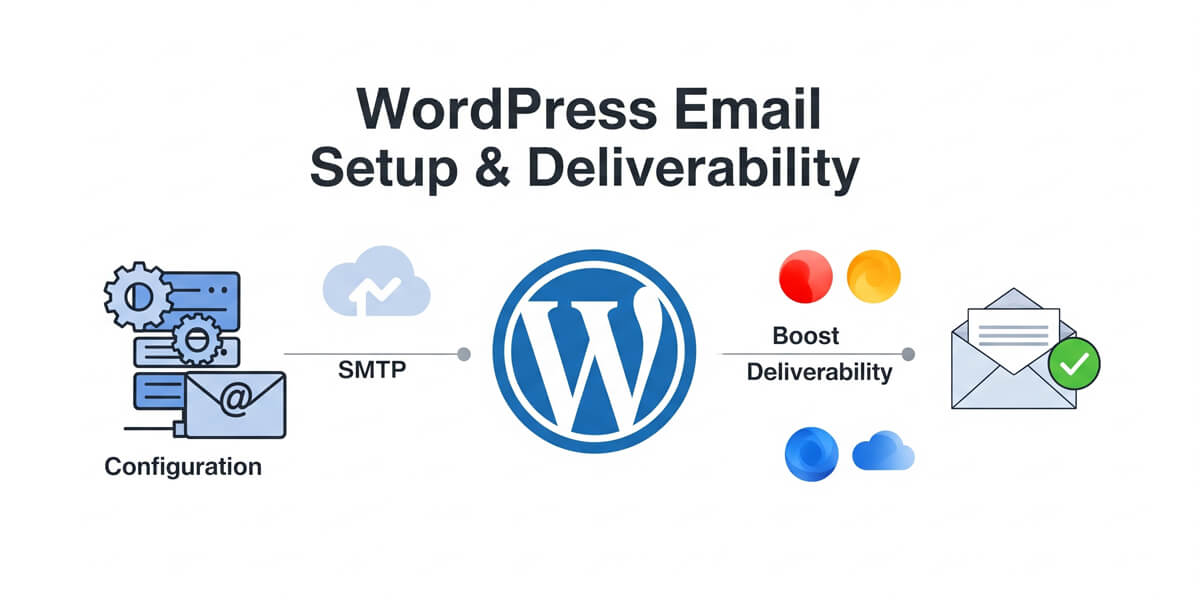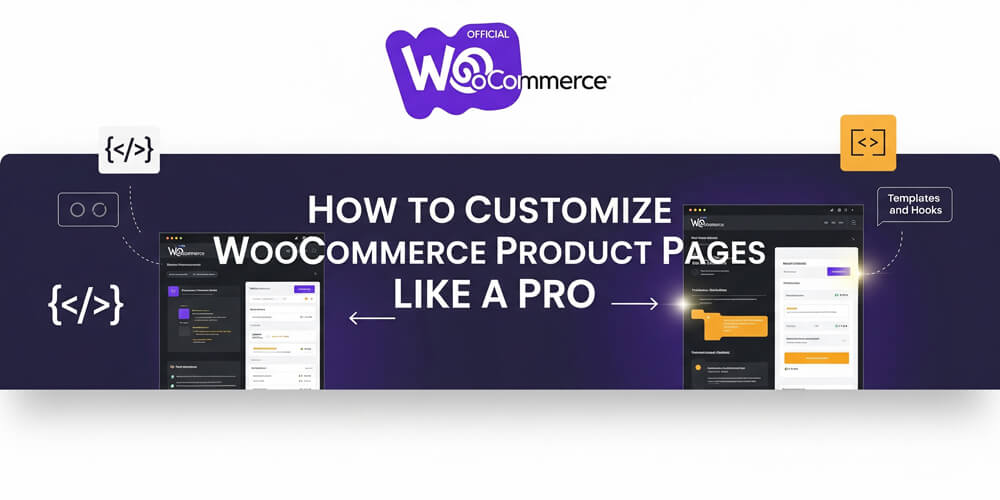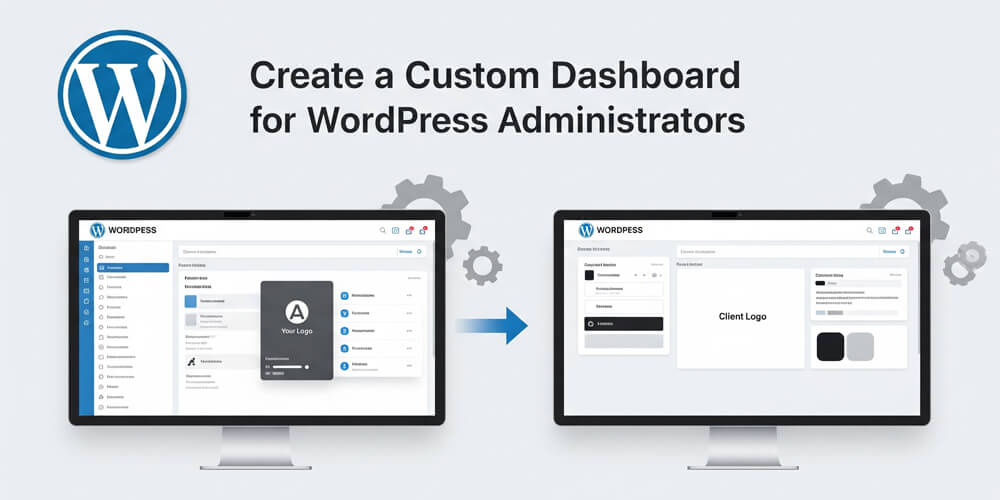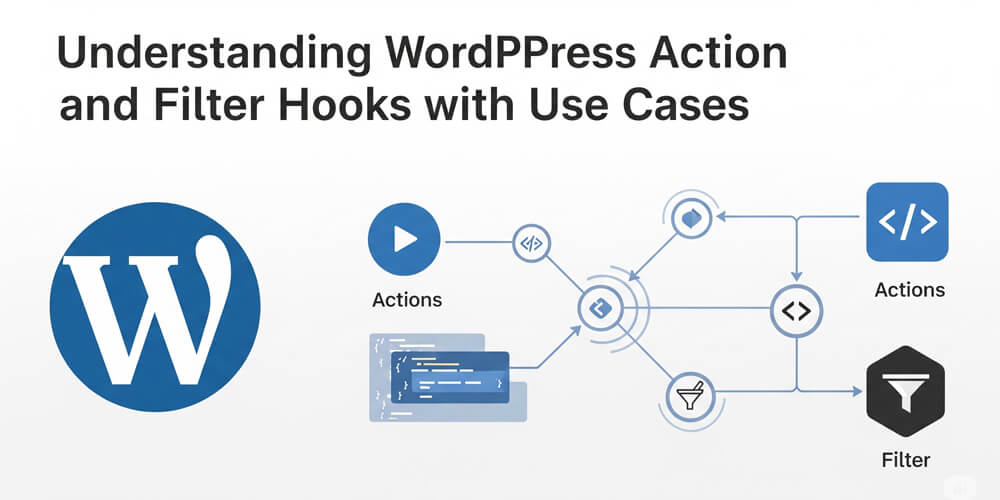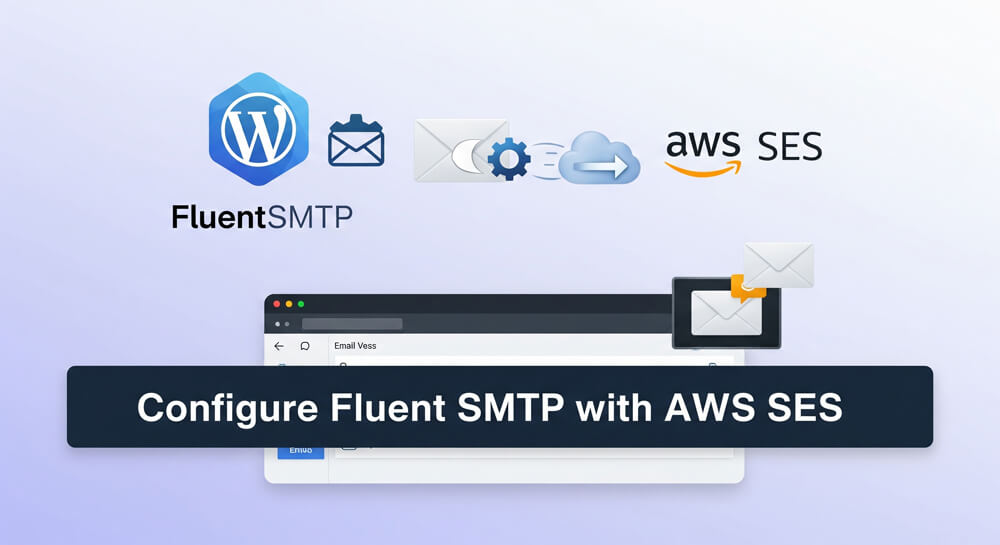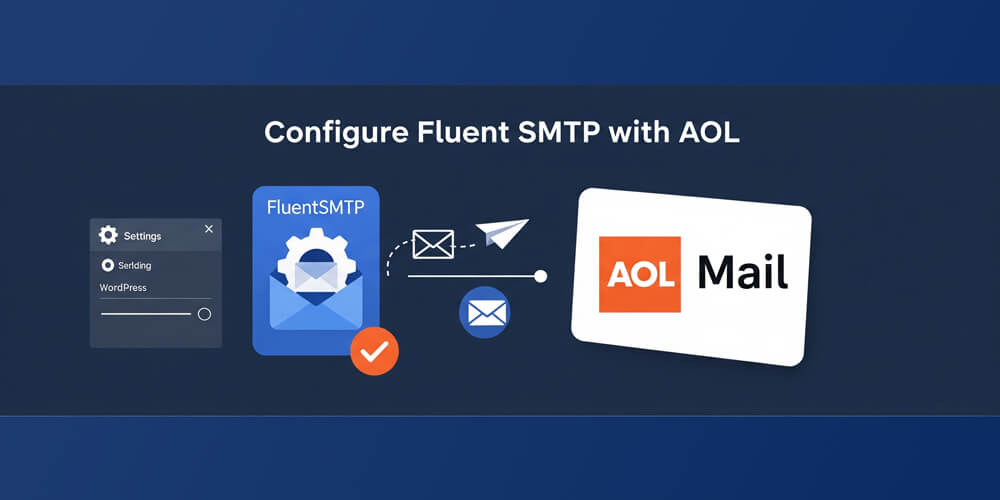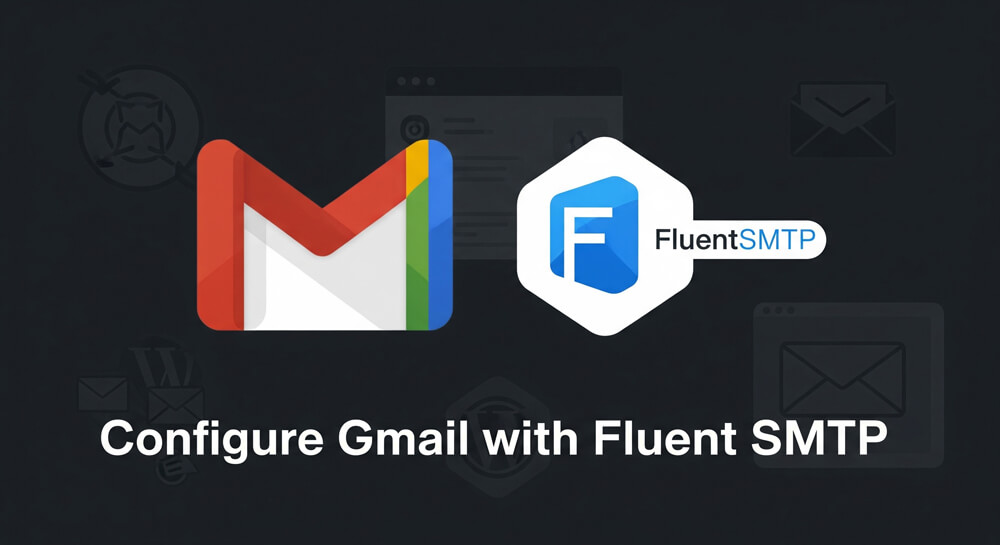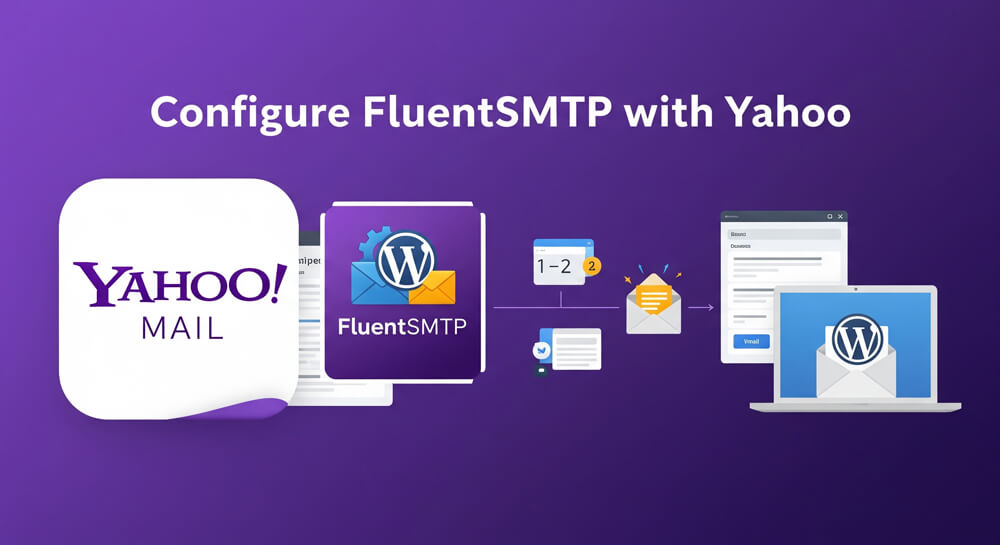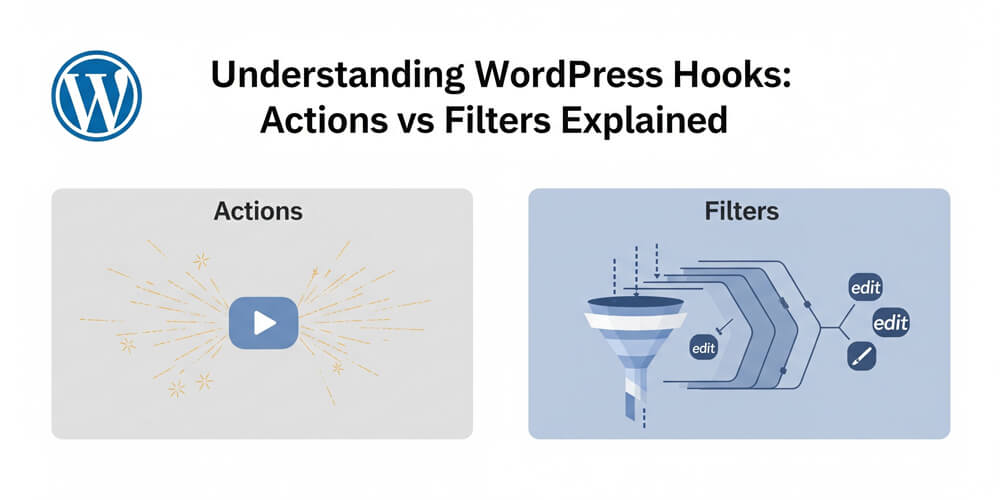Welcome to WordPress Email Setup & Deliverability—your comprehensive 2025 guide to mastering WordPress email reliability. In today’s digital landscape, email is the backbone of site communication: from user registrations and password resets to WooCommerce order updates and critical notifications. Yet, many WordPress sites still rely on the default PHP mail function, which is notorious for poor deliverability and frequent spam issues.
This in-depth guide goes far beyond the basics. You’ll learn:
- Why default WordPress email fails and how it impacts your business.
- How to configure SMTP for bulletproof delivery using leading providers like Gmail, AWS SES, Zoho, Outlook, Yahoo, AOL, and cPanel.
- Step-by-step setup with FluentSMTP—the top WordPress SMTP plugin for 2025.
- Best practices for authentication (SPF, DKIM, DMARC) to keep your emails out of spam folders.
- Pro tips to boost deliverability, monitor performance, and troubleshoot issues.
- Real-world use cases for e-commerce, membership, newsletters, and more.
Whether you’re a beginner or a seasoned WordPress admin, this guide will help you ensure your emails consistently reach inboxes, protect your sender reputation, and support your site’s growth. Let’s dive in and future-proof your WordPress email setup for 2025 and beyond!
Table of Contents
Open Table of Contents
Why Email Setup Matters in 2025
In 2025, email remains the backbone of communication for WordPress sites—whether it’s sending password resets, order notifications, or important updates to your users. Yet, many site owners overlook how WordPress handles email by default, leading to messages that never reach their destination or end up in spam folders. Ensuring your emails are reliably delivered is crucial for maintaining user trust, driving engagement, and protecting your brand’s reputation. Let’s explore why proper email setup is more important than ever and how it directly impacts your site’s success.
Poor email delivery hurts your site:
- Reliability: Default PHP mail often fails or spams.
- Engagement: Order updates, resets keep users happy.
- Reputation: Spam flags harm your domain.
- Business: Lost emails = lost sales or trust.
- Goal: 99%+ delivery to inboxes, not junk.
Stat Alert: 30% of WordPress emails hit spam without SMTP, per 2024 WP Mail SMTP data. Fix it in 2025!
1. Understanding WordPress Email Basics
Before diving into advanced configurations, it’s important to understand how WordPress handles email out of the box. By default, WordPress relies on your web server’s built-in mail capabilities to send notifications, password resets, and other messages. This approach is simple but comes with major drawbacks: emails may not be authenticated, lack proper tracking, and are often flagged as spam or blocked entirely by recipient servers. Knowing these basics will help you appreciate why switching to SMTP is essential for reliable email delivery and how it forms the foundation for all further improvements.
WordPress uses PHP’s mail() function by default—unreliable and untracked. SMTP (Simple Mail Transfer Protocol) is the fix.
1.1 Why SMTP?
- Authentication: Verifies your sender identity.
- Reliability: Bypasses server limits.
- Tracking: Logs delivery, failures.
1.2 Key Terms
- SMTP Server: The mail server (e.g., smtp.gmail.com).
- Port: Common ones: 587 (TLS), 465 (SSL).
- Credentials: Username, password, or API keys.
2. Choosing an SMTP Service
Choosing the right SMTP service is a crucial step in ensuring your WordPress emails are delivered reliably and efficiently. With so many providers available in 2025, it’s important to consider factors like cost, ease of setup, sending limits, and integration with your existing workflow. Some services are ideal for small sites with low email volume, while others are built for scalability and advanced features. Below, we’ll compare the most popular SMTP options to help you decide which fits your needs best.
Pick a service for your needs. Here’s a 2025 rundown:
| Service | Pros | Cons | Best For |
|---|---|---|---|
| Gmail | Free, easy, trusted | 500/day limit | Small sites |
| AWS SES | Cheap, scalable, reliable | Setup complex | High volume |
| Zoho Mail | Affordable, business-friendly | Learning curve | Small businesses |
| Outlook | Microsoft integration | Costs for high use | Office users |
| Yahoo | Simple, free option | Limited features | Basic needs |
| AOL | Easy, legacy support | Low limits, dated | Niche users |
| cPanel Webmail | Host-integrated, simple | Varies by host quality | cPanel users |
- Tip: Start with Gmail for ease, scale to AWS SES for growth.
3. Setting Up FluentSMTP
FluentSMTP is a top plugin for WordPress SMTP in 2025—free, flexible, and reliable. If you want to take control of your WordPress email delivery, FluentSMTP is the go-to solution. It lets you connect your site to any major SMTP provider—like Gmail, AWS SES, Zoho, Outlook, and more—without coding. With its user-friendly interface, you can set up, test, and monitor all outgoing emails directly from your WordPress dashboard. FluentSMTP also offers detailed email logs, error tracking, and supports multiple connections, making it ideal for both beginners and advanced users. In this section, you’ll learn how to install and configure FluentSMTP for seamless, dependable email delivery in 2025.
3.1 Install & Basics
- Steps:
- Go to Dashboard > Plugins > Add New.
- Search “FluentSMTP,” install, activate.
- Navigate to Settings > FluentSMTP.
- Why: Connects to any SMTP service, logs emails.
3.2 Configure a Service
General setup:
- Choose Provider: Select from dropdown (Gmail, AWS, etc.).
- Enter Credentials: Username, password, or API keys.
- Test: Send a test email from FluentSMTP settings.
- Security: Use app-specific passwords or API for safety.
4. Configuring SMTP Services
Configuring your SMTP service is the most important step to ensure your WordPress emails are delivered reliably. Each provider—whether Gmail, AWS SES, Zoho, Outlook, Yahoo, AOL, or cPanel—has its own setup process and requirements. In this section, you’ll find clear, step-by-step instructions for connecting each major service to FluentSMTP. We’ll cover the credentials you need, security tips, and links to detailed guides for each provider. Whether you’re running a small blog or a high-traffic e-commerce site, following these instructions will help you avoid common pitfalls and maximize your email deliverability in 2025.
Let’s set up popular services with FluentSMTP.
4.1 Gmail
- Why: Free, trusted, easy.
- Setup:
- Enable 2FA in Google Account.
- Generate an app password (Google Security > App Passwords).
- In FluentSMTP:
- From Email: [email protected]
- SMTP Host: smtp.gmail.com
- Port: 587 (TLS)
- Username: [email protected]
- Password: App password
- Test and save.
- Guide: See Configure Gmail with FluentSMTP.
4.2 AWS SES
- Why: Scalable, $0.10/1,000 emails.
- Setup:
- Sign up at aws.amazon.com/ses.
- Verify your domain in SES.
- Get SMTP credentials (SES > SMTP Settings).
- In FluentSMTP:
- From Email: [email protected]
- SMTP Host: email-smtp.region.amazonaws.com
- Port: 587 (TLS)
- Username: SES SMTP username
- Password: SES SMTP password
- Test and save.
- Resource: Follow Configure FluentSMTP with AWS SES.
4.3 Zoho Mail
- Why: Affordable, business-ready.
- Setup:
- Log into Zoho Mail, enable SMTP.
- In FluentSMTP:
- From Email: [email protected]
- SMTP Host: smtp.zoho.com
- Port: 587 (TLS)
- Username: Your Zoho email
- Password: Your password
- Test and save.
- Help: Check Configure FluentSMTP with Zoho Mail.
4.4 Outlook
- Setup:
- Get app password from Microsoft account.
- In FluentSMTP:
- From Email: [email protected]
- SMTP Host: smtp-mail.outlook.com
- Port: 587 (TLS)
- Username: Your email
- Password: App password
- Test and save.
- Guide: See Configure FluentSMTP with Outlook.
4.5 Yahoo
- Setup:
- Generate app password in Yahoo Account Security.
- In FluentSMTP:
- From Email: [email protected]
- SMTP Host: smtp.mail.yahoo.com
- Port: 587 (TLS)
- Username: Your email
- Password: App password
- Test and save.
- Resource: Dive into Configure FluentSMTP with Yahoo.
4.6 AOL
- Setup:
- Get app password from AOL account.
- In FluentSMTP:
- From Email: [email protected]
- SMTP Host: smtp.aol.com
- Port: 587 (TLS)
- Username: Your email
- Password: App password
- Test and save.
- Help: See Configure FluentSMTP with AOL.
4.7 cPanel Webmail
- Setup:
- Log into cPanel, create an email account.
- Find SMTP settings in “Email Accounts.”
- In FluentSMTP:
- From Email: [email protected]
- SMTP Host: mail.yourdomain.com
- Port: 587 (TLS)
- Username: Your email
- Password: Your password
- Test and save.
- Guide: Check Configure FluentSMTP with cPanel Webmail.
5. Boosting Email Deliverability
Ensuring your emails actually reach the inbox is just as important as setting up SMTP. Even with the best configuration, poor deliverability can mean lost notifications, missed sales, or frustrated users. In 2025, inbox providers use advanced filters and authentication checks to fight spam, so you need to go beyond basic setup. This section covers the essential steps and best practices to maximize your WordPress email deliverability—helping your messages avoid the spam folder and consistently reach your audience.
Setup is half the battle—ensure emails land in inboxes.
5.1 Domain Authentication
- SPF: Add a TXT record (e.g.,
v=spf1 include:_spf.google.com ~all) to DNS. - DKIM: Sign emails; get keys from your SMTP provider.
- DMARC: Set policy (e.g.,
v=DMARC1; p=quarantine;) in DNS. - Why: Proves you’re legit, avoids spam.
5.2 Best Practices
- From Address: Use [email protected], not free emails.
- Content: Avoid spammy words (“free cash”).
- List Quality: Clean bounced or inactive emails.
- Test: Use Mail-Tester.com for a score.
5.3 Monitoring
- Logs: FluentSMTP tracks sends, failures.
- Tools: Check Gmail Postmaster Tools, AWS SES stats.
- Frequency: Review weekly for issues.
6. Use Cases for WordPress Emails
WordPress emails power a wide range of essential site functions, from user onboarding to e-commerce and beyond. Understanding the different use cases helps you tailor your email setup for maximum impact and reliability. Whether you’re running a membership site, an online store, or a blog, each type of email serves a unique purpose—ensuring users stay informed, engaged, and satisfied. In this section, we’ll explore the most common scenarios where WordPress emails are critical, and how proper configuration can enhance both user experience and site performance.
- Registration: Welcome new users.
- WooCommerce: Order confirmations, shipping updates.
- Newsletters: Pair with Mailchimp—see Build Email List: WordPress Beginners Guide.
- Alerts: Notify via Automate WordPress Cron Monitoring with Telefy.
7. 2025 Deliverability Checklist
- Install FluentSMTP, pick a service.
- Configure Gmail: Configure Gmail with FluentSMTP.
- Set AWS SES: Configure FluentSMTP with AWS SES.
- Try Zoho: Configure FluentSMTP with Zoho Mail.
- Use Outlook: Configure FluentSMTP with Outlook.
- Setup Yahoo: Configure FluentSMTP with Yahoo.
- Add AOL: Configure FluentSMTP with AOL.
- Use cPanel: Configure FluentSMTP with cPanel Webmail.
- Check Email Category and SMTP Tag.
8. Email & Site Success
Email deliverability is more than just a technical checkbox—it’s a cornerstone of your site’s overall success. When your WordPress emails consistently reach users’ inboxes, you foster trust, drive engagement, and support your business goals. In 2025, with inbox providers tightening security and users expecting instant communication, a robust email setup is essential. By investing in proper configuration and best practices, you not only avoid missed notifications and lost sales but also enhance your brand’s reputation. Let’s see how reliable email delivery directly impacts your site’s growth, user satisfaction, and long-term success.
- Trust: Reliable emails build user confidence.
- Engagement: Timely updates keep users active.
- SEO: Pair with speed—see Improve Core Web Vitals for Your WordPress Site.
- Bonus: Secure it—Secure WordPress Site from Hackers: 2025 Edition.
9. Final Thoughts
WordPress email setup and deliverability in 2025 are game-changers. From SMTP with FluentSMTP to services like Gmail, AWS SES, and Zoho, you’re ready for reliable communication. Start today: install FluentSMTP, configure a service, and test delivery. Explore more at Email Category and SMTP Tag for ongoing tips.
Questions? Comment or contact me! Let’s master WordPress emails in 2025!

